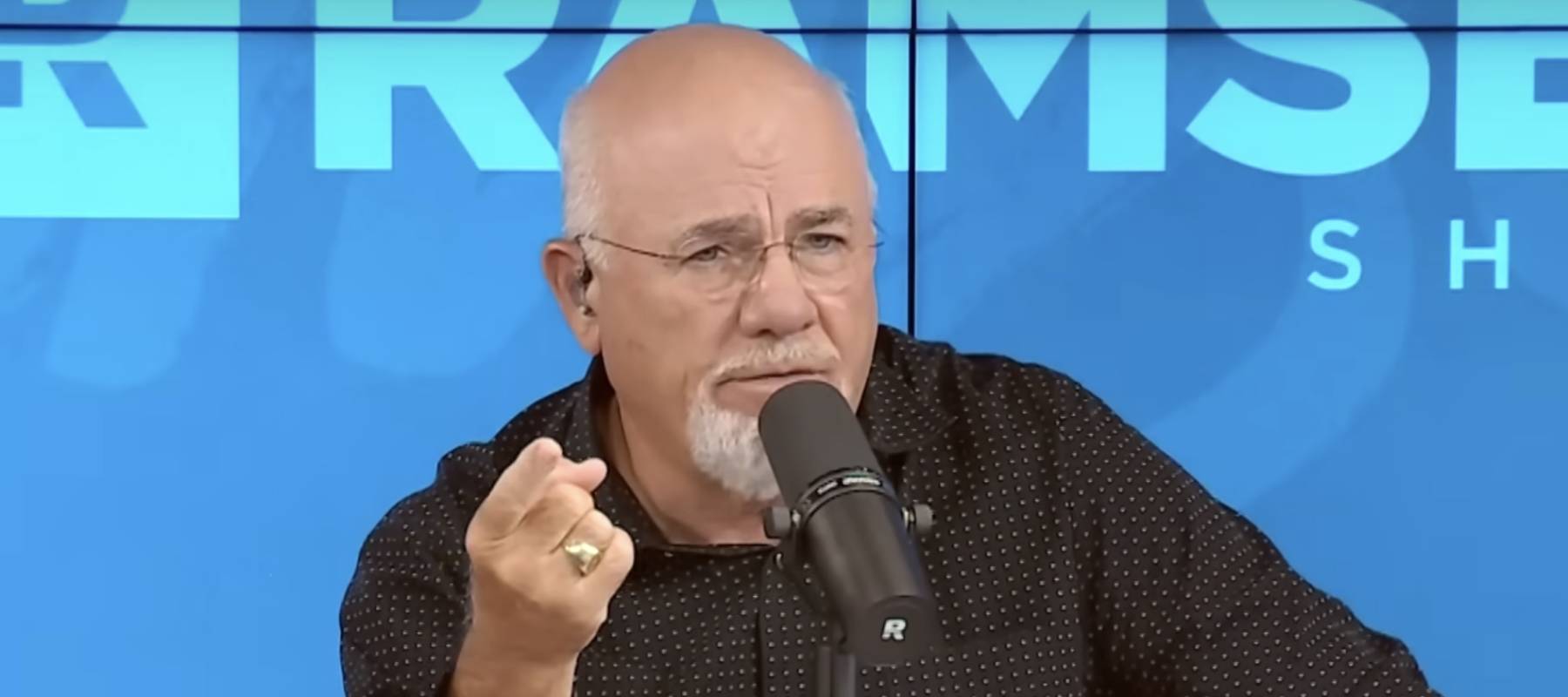
States where it’s easiest (and hardest) to save money
Sean Pavone / Shutterstock
Updated: December 18, 2023
We adhere to strict standards of editorial integrity to help you make decisions with confidence. Please be aware that some (or all) products and services linked in this article are from our sponsors.
We adhere to strict standards of editorial integrity to help you make decisions with confidence. Please be aware that some (or all) products and services linked in this article are from our sponsors.
Americans are regaining some lost financial strength. With inflation cooling, an analysis by the US Bureau of Economic Analysis for the third quarter of 2023 shows an upward trend in disposable personal income. At the same time, the country's gross domestic product has grown by nearly 5%, beating back expectations of financial analysts who had forecasted an impending recession.
A new study by personal finance experts at Moneywise – who looked at what states are best and worst positioned to benefit from the rebounding economy – suggests some interesting trends that tend to affect what happens to that surplus cash. Where you live, the statistics suggest, can significantly impact how much you’re putting away for things like retirement, future medical expenses, or a college education for your kids.
“The US economy is rebounding at a faster pace than initially anticipated, and inflation is also on the decline. This data provides a fascinating insight into the states that are most favorably positioned to capitalize on this turnaround,” said Kris Bruynson, Vice President of Marketing and Product at Moneywise. “It considers the economic conditions within each state, their proficiency in financial management, and their interest in savings and investments to identify the states where people are likely to find it easiest to save money.”
It’s tempting to think that US geographic regions can influence one’s ability to save money because of their obvious variations in cost of living, income levels, and economic opportunities. States with high income and high living costs, like California and New York, often see residents spending more on housing, utilities, and necessities, leaving less for savings. Conversely, regions with a lower cost of living, like the Midwest or the Deep South, would seem to offer more favorable conditions for saving.
But the Moneywise data includes interesting numbers that challenge some of those assumptions.
What may also surprise you: No matter where you live, or where you fall on the savings scale, there are many easy and profitable ways to take advantage of a strengthening economy.
Saving money in 2024
The ability to save money is influenced by a combination of personal, economic and lifestyle factors. Here are some elements that significantly impact an individual's capacity to save:
Income level: Unsurprisingly, the most direct factor affecting savings is income. Higher incomes typically provide greater leeway for saving after covering essential expenses. However, it's not just the gross income that matters but the net income after taxes, which varies depending on tax brackets and deductions.
Cost of living: Geographic location plays a crucial role as it determines the cost of living, including housing, utilities, groceries and transportation. In areas where these costs are high, individuals may find it harder to save, regardless of their income level. Conversely, living in a region with a lower cost of living can enable more substantial savings.
Debt and financial obligations: High levels of debt, whether from student loans, credit cards, or mortgages, can significantly reduce the amount of money available for savings. The interest rates on these debts also affect how much one can save, as higher rates mean larger payments.
Lifestyle choices and spending habits: Personal choices about lifestyle and spending have a profound impact on saving potential. Habits like dining out frequently, expensive hobbies, or a penchant for luxury items can quickly eat into the money that could otherwise be saved.
Financial planning and discipline: Effective savings often require deliberate planning and discipline. Setting clear financial goals, budgeting and regular monitoring of expenses help in identifying areas where spending can be reduced to increase savings. Additionally, the ability to resist impulse buys and adhere to a budget plays a significant role.
In measuring how states where people live can impact their ability or willingness to save, Moneywise analyzed seven measures relating to financial astuteness and scored each state out of 100 as part of their index. The factors incorporated within the index include average consumption as a percentage of personal income, household debt to income ratio, rate of homeownership, unemployment rates, personal bankruptcy rates, unbanked rates, and average monthly Google searches for terms related to savings and investments.
Easiest states to save money
Our first group of states – where the data shows it’s easiest to save – may challenge conventional thought that it’s harder to stash cash in the US Northeast because of its higher cost of living in places like New York City and Boston. Of course, the region has an enormously high concentration of wealth – and price tags that cut into that wealth.
Vermont
-1702388122.jpg)
Vermont is at the forefront as the most favorable state for saving money, boasting a score of 74.07 on a 100-point index. Despite its relatively high consumption rates, where residents spend about 101.5% of their income, Vermont maintains a healthier debt to income ratio of 1.32. This figure indicates that the state's average debt is 1.32 times its average income, slightly better than the national average of 1.36.
Vermont's economic indicators further bolster its standing. The state enjoys the second-lowest unemployment rate in the country at 1.80%, coupled with low rates of personal bankruptcy. Additionally, there's a notable interest in financial growth among its residents, as evidenced by high monthly search volumes for topics related to savings and investments. These factors collectively make Vermont an ideal environment for individuals looking to save and manage their finances effectively.
Maine

Maine secures the second position in the rankings with an index score of 73.58 out of 100. Despite facing a higher cost of living, where average consumption accounts for 105.2% of personal income, Maine exhibits a debt-to-income ratio of 1.50. This indicates a higher relative debt burden compared to some other states.
But the state’s strong points include having the second-highest homeownership rate at 77%, alongside a comparatively low unemployment rate of 2.5%. Additionally, Maine stands out for having one of the lowest percentages of “unbanked” individuals, at just 1.3%. “Unbanked” refers to adults who lack access to or do not utilize conventional banking services, such as savings accounts and credit cards. These factors collectively contribute to Maine's favorable position for financial stability and saving potential.
Delaware

Delaware ranks third with an index score of 72.19 out of 100. This ranking is bolstered by its status as the state with the lowest rate of personal bankruptcy – only 20.52 instances per 100,000 residents. Additionally, Delaware boasts the third-highest rate of homeownership at 76.1%. The state also shows a keen interest in financial growth and savings, evidenced by a substantial number of monthly searches on these topics – 1,209 searches per 100,000 residents.
Massachusetts
Massachusetts holds the fourth position, scoring 67.73 on a 100-point scale. The state's average spending relative to income stands at 93.2%, indicating that residents typically spend less than what they earn in disposable income. This financial prudence is further reflected in the state's interest in savings and investments, as evidenced by the highest average number of monthly searches on these topics, totaling 1,617.
New York
A possible surprise is New York, one of the nation’s most expensive states, which ranks fifth with a score of 66.53 out of 100. Notably, the Empire State shares the lowest debt-to-income ratio of 0.40 with North Dakota and Kansas, a positive indicator of financial health. However, New York also has the lowest rate of homeownership in the nation at 54.2%. In terms of financial awareness and interest, the state ranks high, recording the second-highest number of searches related to savings and investments, with an average of 1,603 searches per 100,000 residents.
Hardest states to save money
Mississippi

Mississippi is the nation’s hardest state to save money, scoring only 35.72 on a 100-point scale. The state has the highest percentage of unbanked citizens, standing at 11.10%.
The state’s high rate of poverty is among its primary challenges, with lower average incomes and limited financial resources straining the ability of its residents to put money away. Additionally, Mississippi's educational system, often ranked lower nationally, can impact earning potential and financial literacy, making effective money management and savings more challenging.
That may account for the state’s noticeably low level of interest in savings and investment topics among its residents, evidenced by just 587 monthly searches per 100,000 individuals. Mississippi also ranks second in the nation for personal bankruptcy rates, with 258.8 filings per 100,000 residents.
Nevada

Nevada comes in at 49th, carrying the list’s highest unemployment rate as of August 2023 and one of its highest rates of personal bankruptcy.
The state's tourism-driven economy, particularly in cities like Las Vegas, often leads to higher living costs, impacting residents' ability to save. Higher housing costs eat income, and not helping matters is the state’s reliance on hospitality and entertainment, which can fluctuate and affect income stability.
Tennessee

Tennessee ranks as the nation’s third hardest state to save, with a 37.34 score on the 100-point scale. The state carries one of the nation’s highest rates of personal bankruptcy and 5 percent of its residents are unbanked. The state’s median income has typically fallen below the national average, contributing to its savings woes.
Louisiana
Louisiana, with an index score of 37.97, is the fourth hardest state to save. More than 8 percent of Louisiana residents are unbanked – second only to Mississippi – and the state’s rate of online searches for investment content ranks among the lowest in the nation.
Idaho
The fifth hardest state in which to save is Idaho, at 38.74. The Gem State boasts a relatively low unemployment rate (3%), and some of the other measures – including online searches for investment content, and unbanked residents – trend around or below their national averages. But the state has earned its reputation for pricey outdoor pursuits and has some of the highest costs of living in the US West. Its household debt-to-income ratio ties with Maryland for the second highest in the nation, behind Hawaii.
How to save more money
As the economic landscape shifts with cooling inflation, adapting your financial strategy is key. By re-evaluating your budget, focusing on high-interest debts, investing in personal growth, exploring better savings options, and planning for the future, you can maximize your savings and set yourself up for financial success. Remember, small changes can lead to significant savings over time, so start implementing these strategies today and watch your savings grow.
Create and stick to a budget: The cornerstone of successful saving is a well-planned budget. Start by tracking your income and expenses to understand where your money goes each month. Once you have a clear picture, categorize your expenses into necessities (like rent, groceries, and bills) and non-essentials (like entertainment and dining out). Allocate a specific amount to each category and stick to it. Tools like budgeting apps can make this process easier and more efficient. The key is consistency, regularly review and adjust your budget to stay on track.
Cut unnecessary expenses: Identify areas where you can reduce spending. Small, recurring expenses, often overlooked, can add up to significant amounts over time. For instance, consider brewing coffee at home instead of buying it daily from a café. Look for cheaper alternatives for utilities, cancel unused subscriptions, and opt for more cost-effective entertainment options. Even a small reduction in monthly expenses can lead to substantial savings over time.
Set savings goals: Having specific and measurable savings goals can significantly increase your chances of success. Whether it's saving for a down payment on a house, an emergency fund, or a vacation, clear goals give you something tangible to work towards. Break down your larger goals into smaller, more manageable milestones and celebrate each achievement to stay motivated.
Automate your savings: Automation is a powerful tool in building savings. Set up automatic transfers from your checking account to your savings account right after each paycheck. This "pay yourself first" approach ensures that you save consistently and reduces the temptation to spend your savings. Over time, you'll be surprised at how much you can accumulate without even thinking about it.
Invest wisely: Once you've established a habit of saving, consider investing your money to grow it. Depending on your risk tolerance and financial goals, various options are available, from stocks and bonds to mutual funds and retirement accounts. Investing can provide higher returns compared to traditional savings accounts, especially over the long term. However, it's important to do your research or consult with a financial advisor to choose the right investment strategy for your needs.
Additional tips for maximizing savings:
- Shop smart: Look for discounts, use coupons, and compare prices before making purchases and price match if you are able. Consider buying in bulk for items you use frequently.
- Reduce energy costs: Simple changes like using energy-efficient appliances, unplugging electronics when not in use, and improving home insulation can reduce your utility bills.
- Review and negotiate services: Regularly review your service contracts (like internet, phone, and insurance) and negotiate for better rates or switch to cheaper providers.
- Save on transportation: If possible, use public transportation, carpool, bike, or walk instead of driving. This can significantly reduce transportation costs, including fuel, maintenance, and parking fees.
Switch to a high-yield savings account
One of the most effective steps you can take to add a financial cushion is by moving your money to a high-yield savings account, which offers several significant advantages over traditional accounts. Most high-yield accounts can be found at online banks, but some brick-and-mortar institutions are starting to get the hint: If they want to keep customers, they have to compete through higher rates.
Some advantages of high-yield savings accounts:
Higher interest rates: The most significant advantage of high-yield savings accounts is their higher interest rates. These accounts typically offer rates much higher than standard savings accounts, meaning your money grows faster. This difference can be substantial over time, especially when you consider the power of compound interest.
Easy access to funds: Unlike other high-interest options like CDs or investment accounts, high-yield savings accounts usually offer easy access to your funds. This feature is particularly beneficial for those who want to earn higher interest but also need liquidity for unexpected expenses or short-term financial goals.
Low risk: High-yield savings accounts are a low-risk investment. They are often insured by the Federal Deposit Insurance Corporation (FDIC), which insures up to $250,000 per account and keeps your money safe even if the bank or credit union fails.
Encourages saving: The prospect of earning more interest can be a strong motivator for regular saving. Knowing that your savings are growing at a faster rate can encourage you to deposit more money and resist the temptation to spend.
No or low fees: Many high-yield savings accounts come with no monthly maintenance fees, especially those offered by online banks. This feature helps preserve your earnings, as you're not losing a portion of your interest to fees.
Flexibility: These accounts often have no minimum balance requirements, making them accessible to a wide range of savers, from those just starting to save to those looking to move large amounts of cash.
Other ways to save
There are plenty of easy-to-execute strategies for building your nest. Let’s take a look.
Paying down your debt
Cutting debt is crucial for financial stability and peace of mind. If you’re one of the more than 60 percent of Americans with credit card debt, it’s time to reconsider how you can pay down your debt and reroute that money to your savings.
One strategy is the avalanche method, which focuses on paying off debts with the highest interest rates first while maintaining minimum payments on other debts. By targeting high-interest debts, you minimize the total interest paid over time, making this method cost-effective in the long run. Once the highest interest debt is paid off, move to the next highest, and so on, creating a powerful “avalanche” of debt repayment.
The snowball method targets your smallest debts first, regardless of the interest rate. This strategy provides quick wins, boosting your motivation and sense of accomplishment. As each small debt is cleared, you roll the money you were paying on that debt into the next smallest debt, like a snowball growing bigger as it rolls downhill.
If you have a high amount of debt, debt consolidation can help. Consolidation involves combining multiple debts into a single loan, ideally with a lower interest rate. This simplifies your payments (one payment instead of multiple) and can reduce the amount of interest you pay, overall. It’s crucial to research and find a consolidation plan that truly saves you money and doesn’t extend your debt timeline significantly.
Auto-pilot your savings
The most powerful asset you have when planning for retirement is time.
Beginning your savings and investment journey early allows your money a longer period to flourish. Make regular contributions to your retirement plans such as a 401(k) or IRA, and fully utilize any matching contributions offered by your employer. The combination of an early start and steady contributions maximizes the benefits of compound interest and investment growth, greatly enhancing your ability to meet your retirement objectives.
A practical tip: each time you receive a salary increase, consider upping your annual 401(k) contributions by at least one percent, aligning your retirement savings growth with your income growth.
Also consider online investment apps, which use robo-advisors and other tools to automate the investment process for you.
Such automated investing services allocate your funds into a diversified portfolio tailored to your risk tolerance. They utilize sophisticated algorithms to navigate market fluctuations, minimizing your risk. This approach allows you to invest without the stress of constant monitoring, as you watch your savings incrementally increase.
And don’t forget to diversify: Long-term wealth also likely depends on spreading your portfolio across multiple markets, including finding ways to spread investments across tax-advantaged 401(k)s, or real estate.
Make fees your enemy
Search for banks that provide free checking and accounts without monthly or additional fees. Many online banks and some conventional banks promote their services as having no hidden charges, and some even offer the benefit of no overdraft fees.
Those saving for retirement and investors who take the time to compare options will discover that online brokers and robo-advisors often have lower fees compared to traditional brokerage firms.
Live below your means
Here’s where frugality gets fun: When you drive a used car, live in a modest home and only buy the essentials without debt, there’s a good chance you set yourself up to be more likely on a path to wealth.
Secret millionaires understand that, as their earnings increase, they refrain from proportionally increasing their spending. Instead, they channel more funds into investments like stocks and businesses, or into personal growth through education. By consistently living below their means, they're able to sustain and grow their wealth.
To emulate the financial growth of a millionaire, it's beneficial to scrutinize your own spending. Determine what is essential and what expenses you can eliminate. Any savings realized from this exercise should then be redirected towards investments or deposited into a high-yield savings account, thus optimizing your financial growth potential.





